Math Puzzles
This page is the answer key for our 2018 Integral’s puzzle page.
For PRIMES STEP-level Puzzlers:

Tanya Khovanova poses this question for the middle-school level: The MIT Math department has 68 faculty members. Every pair of them are either friends or enemies with each other. It is known that every professor has exactly 42 friends in the department. The department has many committees. In fact, every 3 professors form a committee. Find the number of committees such that all three members are pairwise friends or all three members are pairwise enemies.
Note: Tanya is the head mentor for our PRIMES-STEP program, which is for curious middle-schoolers who like solving challenging problems and are ready to explore advanced math topics.
Answer:
The total number of committees is 68 choose 3: 50116. Unfortunately, one can't calculate the number of committees where all professors are friends as this number is not uniquely defined. Luckily, one can calculate the number of mixed committees: the ones with friends and enemies mixed. A mixed committee has exactly two people who has one friend and one enemy on the committee. Each person has 42 * 25 = 1050 friend/enemy pairs. That means the total number of mixed committees is 1050 * 68/2 = 35700. The answer is the difference: 50116 - 35700 = 14416.
Grad student level: Elchanan Mossel’s Dice Paradox

Elchanan first presented a certain puzzle to his probability class a couple of years ago, when he was giving examples of conditional expectation computation. On the spot, he came up with a problem and derived the solution. “Then I looked at it and asked if it made sense. It did not, as my intuition very strongly warned me that the answer I derived was off. It took me some time to recover and figure out why my intuition was wrong.” And the answer has stumped many since it was presented on Gil Kalai’s blog “Combinatorics and More.” “I am somewhat surprised that it got so popular,” Elchanan added.
Test your intuition:
You roll a die until you get 6. What is the expected number of rolls (including the roll giving 6) conditioned on the event that all rolls gave even numbers?
The expected number of throws:
a. 1 b. 3/2 c. 2. d. 5/2 e. 3 f. 7/2 g. 4
Answer:
Many incorrectly choose E, or 3. Explains Elchanan, “What is confusing about this problem is that it is tempting to think about it as rolling a 3-sided die (with sides 2,4 and 6) until you roll a 6. Then the answer should be 3. However, conditioning on the fact that all roles are even provides additional evidence for a small number of rolls. It is pretty easy to obtain the correct answer by a few lines of computation, but there are also more elegant solutions. For example, Yuval Peres rephrases the question as follows: Roll a die until the first time T that the result is different from 2 and 4. What is the mean of T? This is not hard to compute—and you get 3/2. If we observe that T is independent of the value among 1, 3, 5, 6 obtained in the T’th toss, we realize that conditioning the value to be 6 does not affect the mean of T, which is therefore 3/2.”
The answer is B.
Expert: Studies In Two-factor Authentication
Ugh! Dad says the computer will hurt my eyes, but I doubt that’s his prime concern. Time to see what requires such complex security.
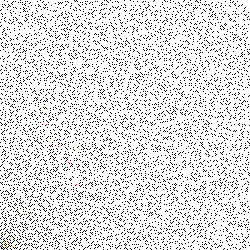
Hint: The answer to this puzzle is an English word or phrase.
Brandon Avila ’16 created this puzzle for the 2018 MIT Mystery Hunt, an annual IAP event since 1981. Brandon has been hunting with the team Death and Mayhem (formerly Death from Above) every year since his freshman year, and they won last year, so his team got to organize this year’s hunt. “I try to stay involved in puzzles year-round by attending some of the local events like Puzzled Pint or BAPHL, and of course I always devote my favorite weekend of the year each January to Mystery Hunt,” says Brandon, who works at the Broad Institute doing statistical genetics, both in analysis and in methods development.
The Hunt is considered one of the oldest and most complex puzzlehunts in the world. Up to 100 teams, mostly MIT students, solve a number of puzzles (anagrams, geometry, scavenger hunts, etc.) over several days, with the goal to find a coin. The hunt will be organized next year by the 2018 winning team, Setec Astronomy.
Does this puzzle seem vague? Brandon intentionally did not include any other instruction. For more ideas on how to solve puzzles such as this, you can go to the Hunt’s resources page at www.mit.edu/~puzzle/resources.html.
“The puzzles for the hunt are often presented without instructions what to do,” says Tanya Khovanova, who is also on the team Death and Mayhem. Tanya worked as a puzzle editor and writer for the last hunt; as an editor for Brandon's puzzle, she says she fell in love with its simplicity and mathematical beauty.
Read more about the Mystery Hunt puzzles on Tanya Khovanova's Math Blog.
Hint:
As clued by the flavor text, this puzzle has to do with factoring primes in the complex plane.
Answer:
BOTNET
The solution is taken by permission from the Mystery Hunt Solutions page:
As clued by the flavor text, this puzzle has to do with factoring primes in the complex plane. The image is a 250x250 section of the first quadrant in the complex plane beginning at (0, 0) in the bottom left corner. Each black dot represents a Gaussian prime (a prime number in the ring of Gaussian integers), and each colored dot represents a composite number with exactly two factors.
For each color (red through purple), the composite numbers are factored, and their factors are connected pairwise in the plane by a line as follows:
B: Red
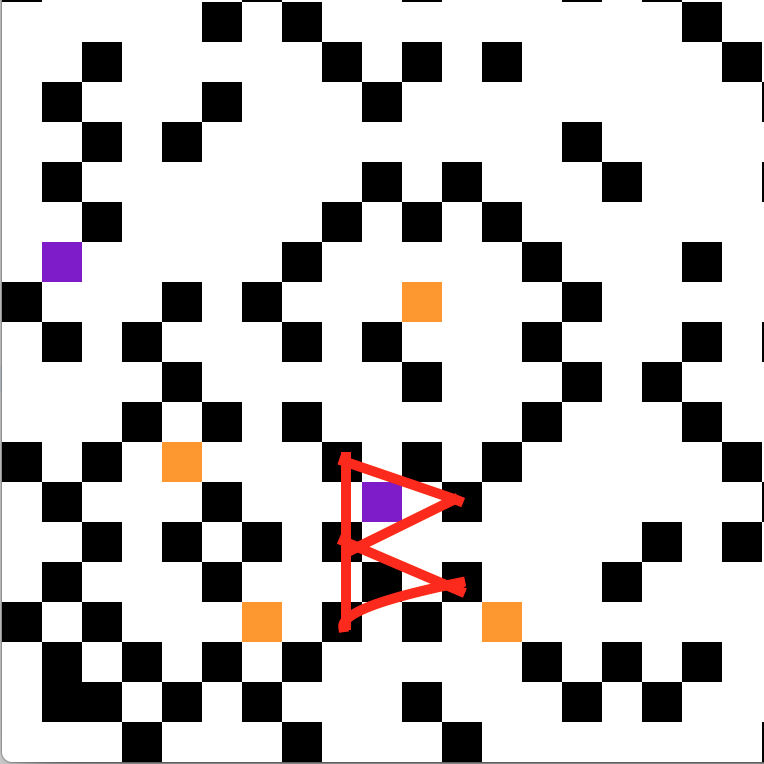
43 + 80i = (8 + 3i)(8 + 7i)
76 + 65i = (8 + 3i)(11 + 4i)
68 + 87i = (8 + 5i)(11 + 4i)
58 + 103i = (8 + 5i)(11 + 6i)
46 + 125i = (8 + 7i)(11 + 6i)
O: Orange
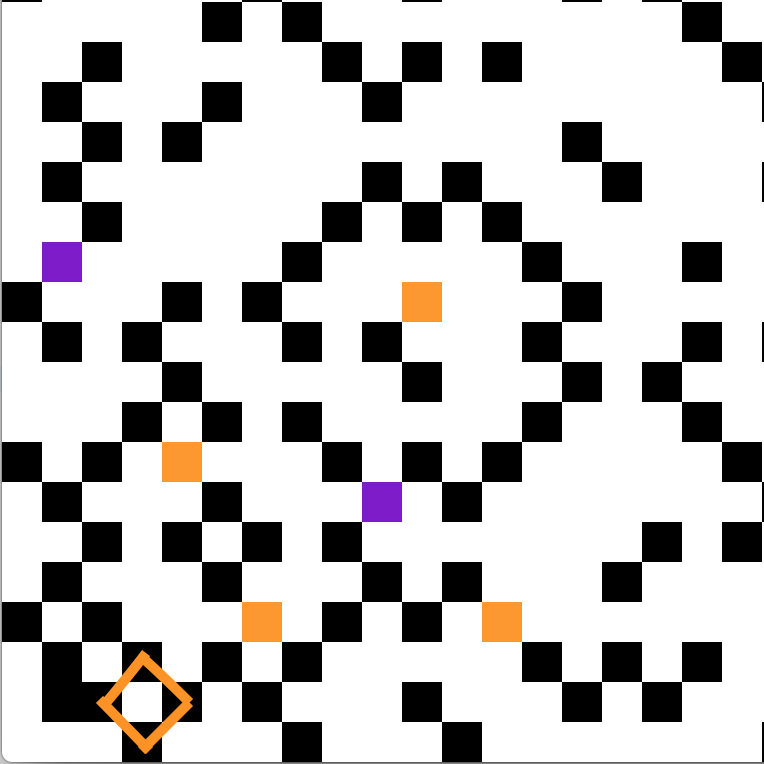
6 + 3i = (2 + i)(3)
12 + 3i = (4 + i)(3)
10 + 11i = (4 + i)(3 + 2i)
4 + 7i = (2 + i)(3 + 2i)
T: Yellow
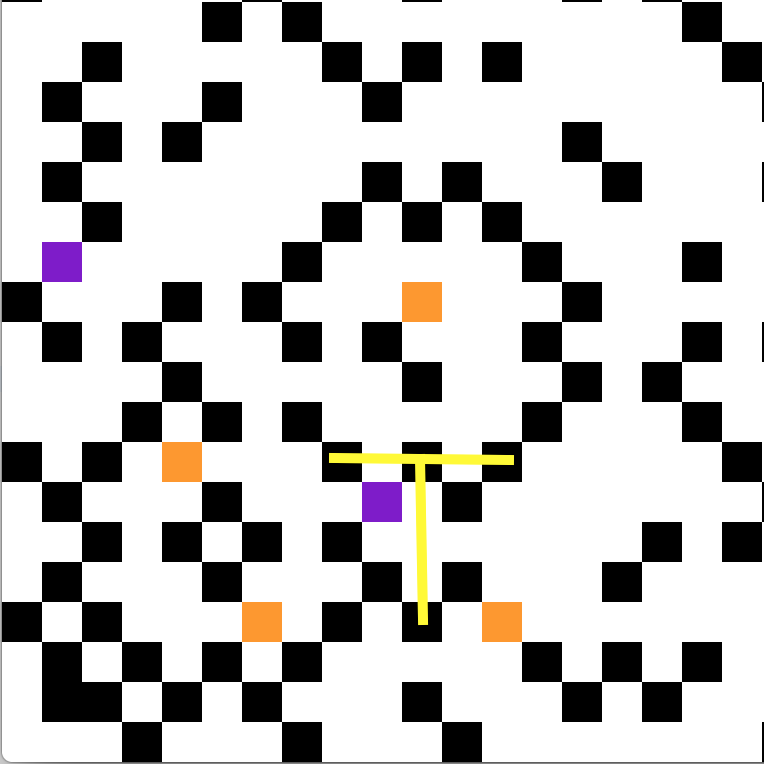
47 + 140i = (8 + 7i)(12 + 7i)
79 + 100i = (10 + 7i)(10 + 3i)
N: Green
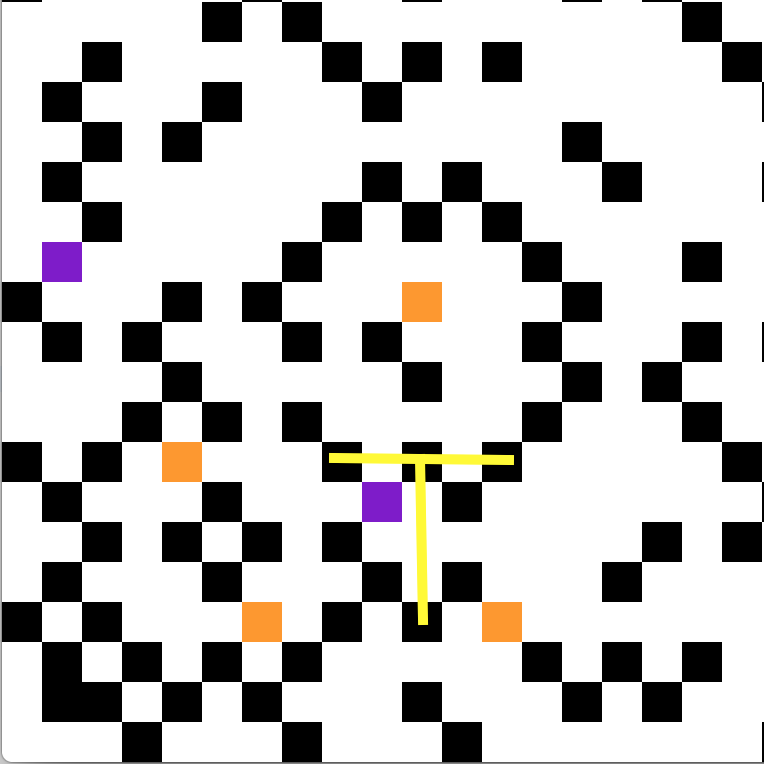
11 + 24i = (4 + i)(4 + 5i)
19 + 34i = (6 + i)(4 + 5i)
31 + 36i = (6 + i)(6 + 5i)
E: Blue
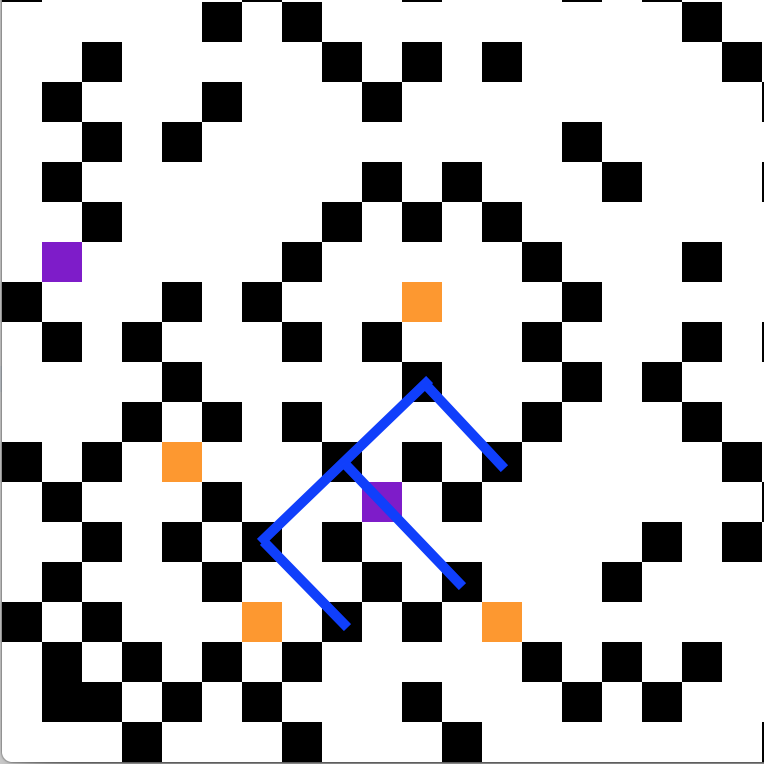
15 + 104i = (6 + 5i)(10 + 9i)
33 + 58i = (6 + 5i)(8 + 3i)
57 + 178i = (10 + 9i)(12 + 7i)
60 + 109i = (11 + 4i)(8 + 7i)
T: Purple
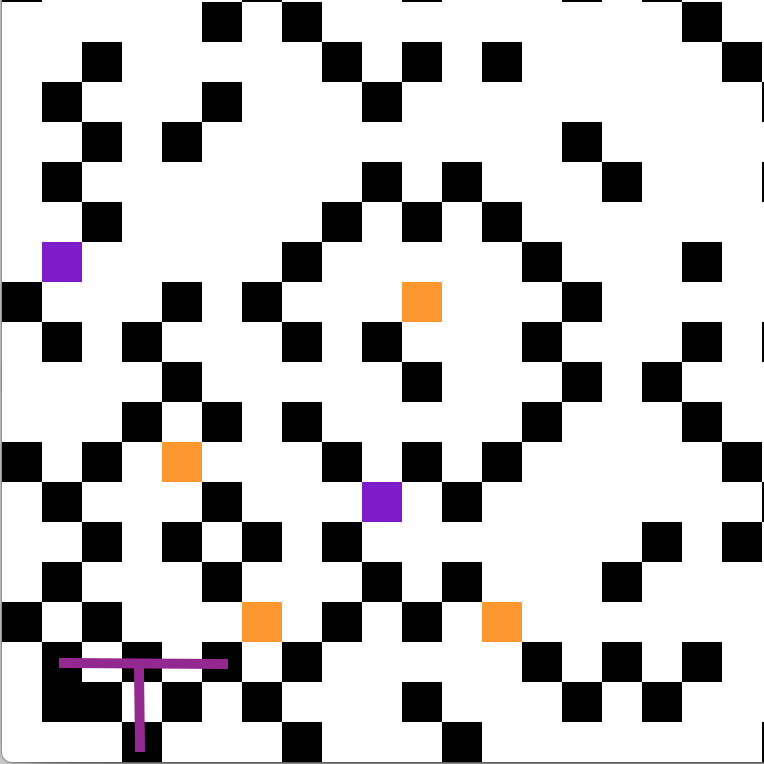
1 + 12i = (1 + 2i)(5 + 2i)
9 + 6i = (3 + 2i)(3)
Taken in order, these letters spell out the solution, BOTNET.
